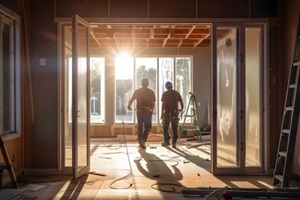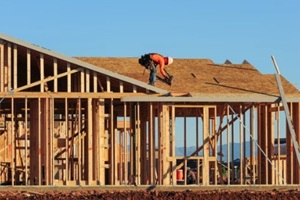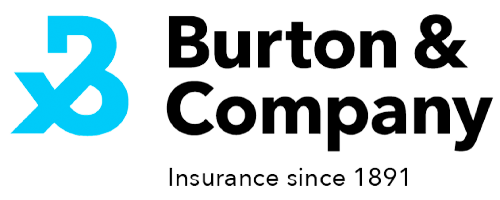
Home builders encounter a wide range of risks on every project, such as jobsite injuries, property damage, and equipment theft. Because of this, insurance coverage is not just a regulatory requirement, it’s a necessary safeguard for long-term success. However, many home builders worry that maintaining strong protection means accepting high insurance costs.
Fortunately, there are effective strategies to reduce insurance premiums without compromising coverage. With the right approach, home builders can protect their business while keeping expenses under control.
Here are six practical ways to lower insurance costs without sacrificing the coverage your company needs.
1. Work With an Insurance Provider Who Understands Construction
Not all insurance providers have deep experience with home builders and general contractors. Working with an agency that specializes in the construction industry can help you secure policies that are competitively priced and properly customized for your business.
Specialized agents understand your exposures and can guide you toward:
- Industry-specific discounts
- Bundled coverage options
- Efficient claims handling
- Ongoing risk management strategies
The more your insurance partner understands about home construction, the better prepared they are to help you avoid overpaying for unnecessary or duplicate coverage.
2. Bundle Policies for Cost Savings
Many home builders carry several types of insurance, including general liability, workers’ compensation, commercial auto, and builder’s risk coverage. Bundling these under a single provider can result in multi-policy discounts and streamlined billing.
By consolidating policies through one agency, you can also:
- Eliminate gaps or overlaps in coverage
- Make it easier to manage renewals
- Improve your overall risk profile
The Insurance Information Institute notes that bundling can help business owners keep coverage strong while improving cost efficiency.
3. Improve Jobsite Safety and Document Your Efforts
Your claims history and risk profile directly influence your premiums. Safer job sites imply a lower chance of claims, which naturally leads to lower premiums over time.
To demonstrate your commitment to safety:
- Maintain written safety protocols
- Conduct regular training for employees and subcontractors
- Require the use of personal protective equipment (PPE)
- Use signage and barriers to restrict dangerous areas
- Invest in fall protection and first aid supplies
Document your safety program and share it with your insurance provider. A proactive approach to risk management can make you eligible for policy discounts.
OSHA offers a helpful guide to developing effective jobsite safety programs.
4. Raise Your Deductibles Strategically
Another way to reduce your insurance premiums is to raise your deductibles on certain policies. Higher deductibles lower the insurer’s risk, which usually results in lower monthly or annual costs.
This can work well if your company:

- Has the financial stability to cover higher out-of-pocket expenses
- Experiences few claims
- Uses strong preventive measures to reduce risk
Just make sure your deductible is realistic. If it is too high, you may find it difficult to cover costs if you need to file a claim.
5. Regularly Review and Right-Size Your Coverage
As your business evolves, so should your insurance coverage. Many home builders continue renewing the same policies year after year without reviewing them, which can lead to unnecessary costs.
Take time to evaluate:
- Whether your current policy limits still reflect your project sizes
- If older equipment is over-insured
- Whether subcontractor arrangements have changed
- If you’re paying for coverage that no longer applies
An annual review can help contractors avoid overpaying and make sure the right protections are in place.
6. Verify Subcontractor Insurance Requirements
Hiring subcontractors who lack adequate insurance can increase liability exposure and premiums. If a subcontractor causes a loss and doesn’t carry their own coverage, your policy may end up footing the bill.
To protect your business and control costs:
- Require all subcontractors to carry valid general liability and workers’ compensation insurance
- Request Certificates of Insurance (COIs) before work begins
- Verify that policies are current and meet your minimum requirements
The National Association of Insurance Commissioners also recommends subcontractor verification to minimize unnecessary risks.
7. Invest in Risk Management Services
Some insurance providers offer value-added risk management services as part of your coverage. These may include:
- Jobsite audits
- Safety training materials
- OSHA compliance resources
- Claims trend analysis
Using these tools improves safety and can lead to premium credits or lower renewal rates. If you are already paying for coverage, it makes sense to take advantage of everything that comes with it.
Build Smarter with the Right Insurance Partner

Cutting corners on insurance coverage is never a good idea. Fortunately, you don’t have to choose between affordable premiums and solid protection. With the right strategy and a knowledgeable insurance partner, home builders can control insurance costs while keeping their operations protected.
At Burton & Company, we specialize in helping home builders in Virginia find the right balance between cost and coverage. Our experienced agents understand the construction industry and will work with you to identify smart, cost-effective insurance solutions for your projects.
If you’re ready to lower your insurance costs without giving up the protection your business depends on, contact Burton & Company today. Request a quote online or give us a call at (888) 652-1325 to speak with one of our experienced insurance professionals today.

